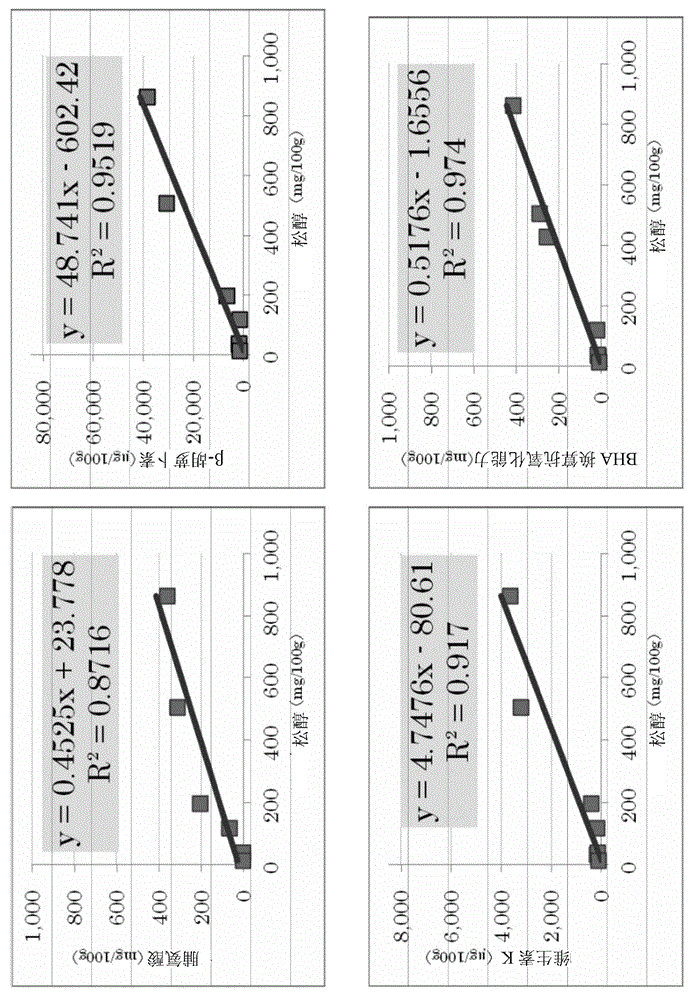Technique and method for producing functional material originated from ice plant, and functional component
A technology of ice leaf and middle flower, applied in the field of functional raw materials
- Summary
- Abstract
- Description
- Claims
- Application Information
AI Technical Summary
Problems solved by technology
Method used
Image
Examples
Embodiment 1
[0103] Plant cultivation method and transformation confirmation method
[0104] In all the examples, the following method is used to cultivate Iceleaf Hijami.
[0105] Seeds of Ichiba Hichuka were sown in Salad urethane for hydroponic cultivation (trade name, manufactured by M Type Hydroponics Laboratory Co., Ltd.), germinated in seedling trays, and grown to the 2-4 leaf stage. Then, NFT circulation cultivation (film circulation hydroponic cultivation) in a closed plant factory is implemented. The hydroponic liquid uses Otsuka formula (containing nitrogen, phosphoric acid, potassium, lime, magnesium, manganese, boron, iron, copper, zinc, molybdenum, etc.). At pH 5.5-6.5, sunshine time 24 hours, cultivation density 40.7 plants / m 2 , EC (conductivity) 0.23 ~ 0.27, room temperature 22 ° C under the conditions of cultivation, until the burden of each stress, 15 days after sowing in the hydroponic liquid to add 100mM concentration of sodium chloride. However, in the present inve...
Embodiment 2
[0108] Stress test using changes in pH
[0109] Cultivate Iceleaf Hichinaka as described in Example 1, add 150ml / 1000L of pH DOWN solution or pH UP solution to the hydroponic solution on the 50th day after sowing to increase or decrease the pH of the hydroponic solution to pH 3.0 about. On the 10th day after the stress burden, the Bingye heliotrope transformed.
Embodiment 3
[0111] Stress test using elevated temperature
[0112]As described in Example 1, Iceleaf Hichinaka was cultivated, and the indoor temperature was raised from 22° C. to 30° C. in about 40 hours on the 55th day after sowing. In addition, the liquid temperature is also the same temperature. Then, the room temperature was returned to 22° C. over a period of 3 hours. On the 5th day after the stress burden, the Bingye Himidflower transformed.
PUM
| Property | Measurement | Unit |
|---|---|---|
| particle diameter | aaaaa | aaaaa |
Abstract
Description
Claims
Application Information
 Login to View More
Login to View More - R&D
- Intellectual Property
- Life Sciences
- Materials
- Tech Scout
- Unparalleled Data Quality
- Higher Quality Content
- 60% Fewer Hallucinations
Browse by: Latest US Patents, China's latest patents, Technical Efficacy Thesaurus, Application Domain, Technology Topic, Popular Technical Reports.
© 2025 PatSnap. All rights reserved.Legal|Privacy policy|Modern Slavery Act Transparency Statement|Sitemap|About US| Contact US: help@patsnap.com

